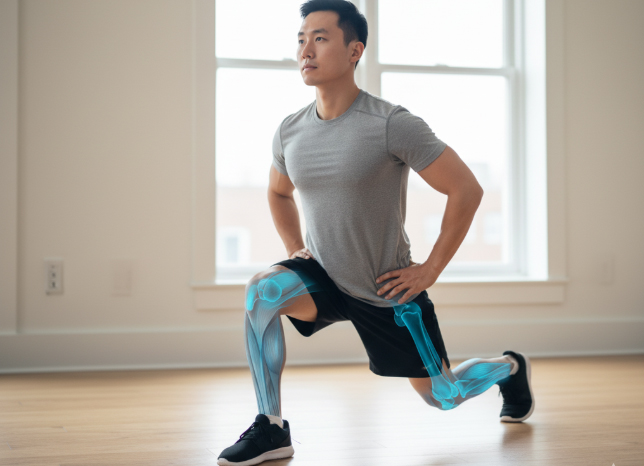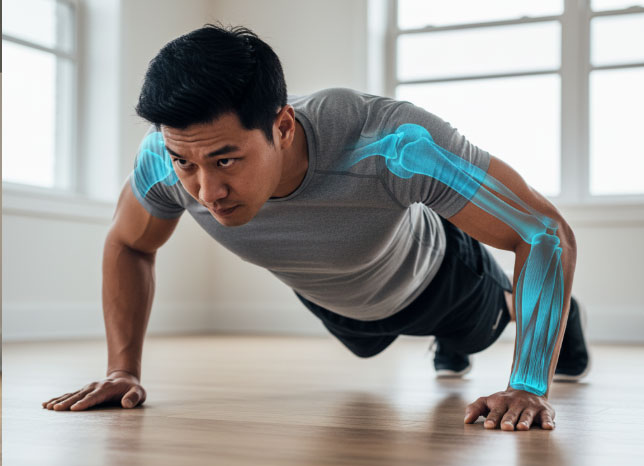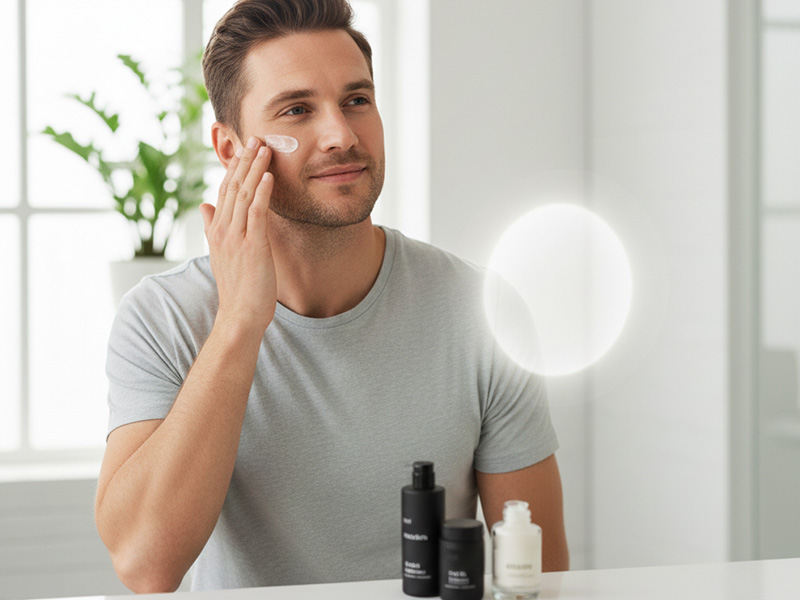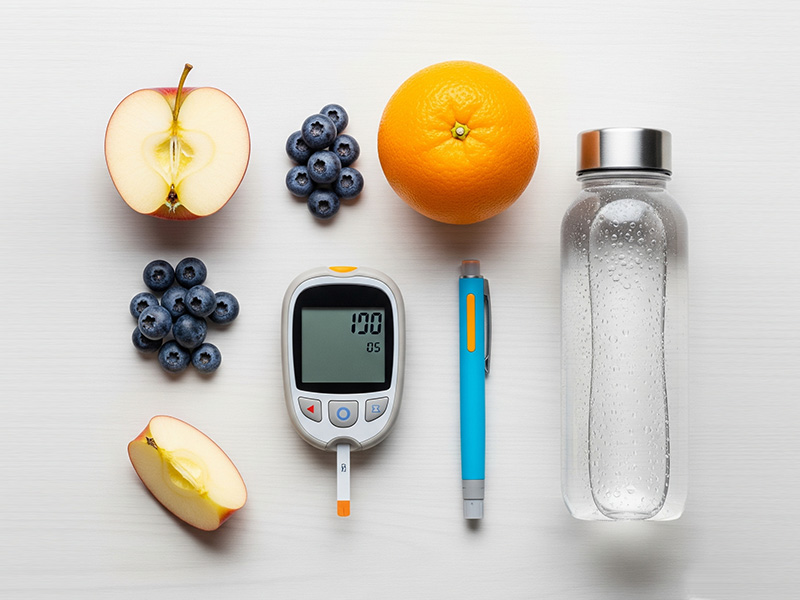Maintaining physical fitness doesn’t always require access to a gym, weights, or specialized equipment. Bodyweight exercises offer a highly effective, versatile way to build strength, enhance endurance, and improve overall health using only the resistance of your own body. These exercises are perfect for anyone, whether you’re at home, traveling, working in a small office, or enjoying time outdoors. They require minimal space and no equipment, making them ideal for busy lifestyles in 2025. Below, we explore 10 bodyweight exercises that can be done anywhere, along with tips to maximize their benefits and integrate them into your daily routine for a stronger, healthier you.
1. Push-Ups
Push-ups are a classic exercise that target multiple muscle groups, including the chest, shoulders, triceps, and core. Begin in a plank position with your hands placed slightly wider than shoulder-width apart. Keep your body in a straight line from head to heels. Lower your chest toward the ground, bending your elbows at a 45-degree angle, then push back up to the starting position. For beginners, modify by dropping to your knees or performing against a wall. Aim for 3 sets of 10–15 reps, gradually increasing as your strength improves. Push-ups not only build upper-body strength but also engage your core for better stability and posture.
2. Squats
Squats are a powerhouse for lower-body strength, targeting the quadriceps, hamstrings, glutes, and core. Stand with your feet hip-width apart, toes slightly turned out. Lower your hips as if sitting into a chair, keeping your chest lifted and knees behind your toes. Push through your heels to return to standing. Perform 3 sets of 15–20 reps. To increase intensity, try single-leg pistol squats or add a jump at the top. Squats improve mobility, balance, and leg strength, making everyday movements like walking or climbing stairs easier.
3. Plank
The plank is a simple yet effective exercise for core strength and stability. Start face down, then prop yourself up on your forearms and toes, forming a straight line from shoulders to heels. Engage your core by pulling your belly button toward your spine, and avoid letting your hips sag or pike up. Hold for 20–60 seconds for 3 sets, extending the duration as you progress. Variations like side planks or plank jacks can add variety. A strong core supports better posture, reduces back pain, and enhances athletic performance.

4. Lunges
Lunges strengthen the legs and glutes while improving balance and coordination. Step forward with one leg, lowering your back knee toward the ground while keeping your front knee aligned over your ankle. Push back to the starting position and switch legs. Complete 3 sets of 12–15 reps per leg. For added challenge, try reverse lunges or walking lunges. Lunges mimic natural movements, enhancing functional fitness for activities like hiking or running.
5. Burpees
Burpees are a full-body exercise that combines strength and cardio. From a standing position, squat down, place your hands on the ground, jump back into a plank, perform a push-up, then jump back to a squat and leap upward with arms raised. Do 3 sets of 8–12 reps. Burpees boost heart rate, burn calories, and build endurance, making them ideal for a quick, high-intensity workout when time is limited.
6. Mountain Climbers
Mountain climbers are excellent for cardio and core strength. In a plank position, rapidly alternate bringing each knee toward your chest, as if running horizontally. Keep your hips low and core engaged to avoid bouncing. Perform 3 sets of 30–45 seconds. This exercise elevates heart rate while strengthening the abs, hip flexors, and legs, offering a dynamic way to improve agility and stamina.
7. Glute Bridges
Glute bridges target the glutes, hamstrings, and lower back, promoting posterior chain strength. Lie on your back with knees bent and feet flat, hip-width apart, close to your glutes. Lift your hips toward the ceiling, squeezing your glutes at the top, then lower slowly. Aim for 3 sets of 15–20 reps. For a challenge, try single-leg glute bridges. This exercise supports lower back health and improves hip mobility, which is crucial for preventing injuries.
8. Bicycle Crunches
Bicycle crunches are a top choice for sculpting the abs and obliques. Lie on your back, hands behind your head, and lift your legs off the ground. Alternate touching each elbow to the opposite knee while extending the other leg straight. Move slowly to maximize muscle engagement. Do 3 sets of 15–20 reps per side. This exercise enhances core strength and definition, supporting better balance and spinal health.
9. Tricep Dips (Using a Surface)
Tricep dips build arm and shoulder strength using a sturdy surface like a chair, bench, or step. Sit on the edge, hands beside your hips, and slide off, supporting your weight with your arms. Bend your elbows to lower your body, keeping your back close to the surface, then push back up. Perform 3 sets of 10–15 reps. Keep your shoulders relaxed to avoid strain. Tricep dips tone the arms and improve upper-body functionality for daily tasks.
10. High Knees
High knees combine cardio and leg strength for a dynamic workout. Stand tall and rapidly lift each knee to hip height while pumping your arms, as if sprinting in place. Stay light on the balls of your feet to reduce impact. Do 3 sets of 30–45 seconds. High knees improve coordination, boost heart rate, and strengthen the lower body, making them perfect for warming up or adding intensity to your routine.
Tips for Success
To maximize these exercises, maintain proper form to prevent injury and ensure effectiveness. Start with a warm-up, like light jogging or jumping jacks, to prepare your muscles. Create a circuit by performing each exercise back-to-back for 30–60 seconds, resting briefly between rounds, for a full-body workout in 15–20 minutes. Gradually increase reps, sets, or intensity as your fitness improves. Consistency is key—aim to incorporate these exercises 3–5 times per week, adjusting based on your schedule and energy levels.
Conclusion
These 10 bodyweight exercises provide a complete, equipment-free workout that fits seamlessly into any lifestyle. Whether you’re a beginner or a fitness enthusiast, they offer scalability and versatility to meet your goals. In 2025, with busy schedules and constant demands, these exercises empower you to prioritize health without needing a gym. Start small, perhaps with 2–3 exercises daily, and build up to a full routine. With dedication, you’ll enhance strength, endurance, and overall well-being, proving that fitness is always within reach, no matter where you are.






